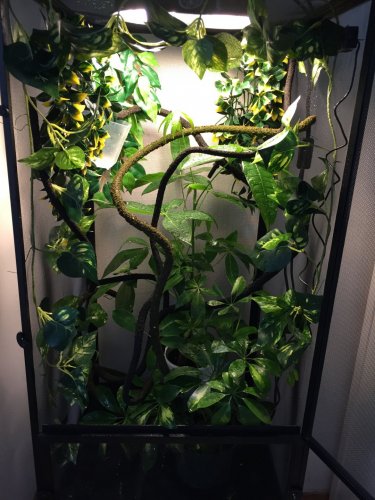Goose502
Chameleon Enthusiast
I do agree that a large, poorly decorated cage is a bad idea for a baby chameleon. I've been using oversized habitats for decades, for dozens of species of reptiles, not just chameleons. My focus is on natural recreation. I, along with many hobbiests, feel this is the best way to keep specimens healthy, happy, and behavioral wise, most like in the wild. This is not the answer for quarantine, weather the animal is new to the collection, or part of a clutch of neonates. The OP's chameleon is no longer a neonate, and is housed alone. Smaller caging has its place, but not because an animal is small. Save some money, build one habitat for the life of your chameleon, and build it right.

